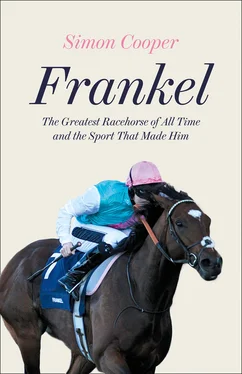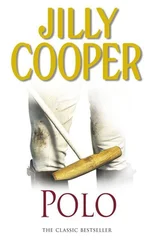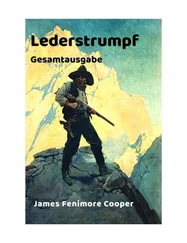Winning two Derbies is an impressive achievement by any measure, but if we are being truthful Galileo would only just make it into the list of the top one hundred racehorses of all time. His short burst of a racing career, allied with that famous bloodline, would suggest at the outset solid and successful years at stud. But horse genes are a peculiar thing.
We will be back to see Galileo again, but for now let us savour where he stands just past his twentieth birthday. As we all know, Frankel is his most famous son, but even if you took him out of the equation, Galileo would still reign as the supreme stallion. Since he first came to Coolmore in 2001, he has sired 2,743 foals, 2,089 of which reached the racecourse winning 3,868 races all over the world, amassing total prize money of £177,088,490.* And as I stood beside him on that greyish April day, he didn’t seem to have any inclination to stop. In the previous season, he had been the leading sire in Great Britain and Ireland, eclipsing his nearest rival (the title is determined by racecourse earnings, in this case £13,663,938) by a factor of three. His roster of great sons and daughters, many of them now successful at stud themselves, would take up more pages than this book has to spare; his stud record (i.e. every significant race his children have won or been placed in) on the Coolmore website runs to fifty-seven pages. Suffice to say, there is barely a major race anywhere on the globe that the Galileo progeny haven’t won, in many cases more than once, including three Derby winners, winners of all five of the English Classics and in one year the first three home in continental Europe’s premier race, the Prix de l’Arc de Triomphe.
All this, as you might imagine, comes at a price. If you visited that same Coolmore website to see exactly how much you will have to pay, you are going to be disappointed: the stud fee for the current year is marked as private. But the rumour is €600,000. That is to say, over half a million pounds to have your already valuable mare mated with Galileo. And you will not be the only one. Galileo will ‘cover’, as they like to call it in the business, around 150 mares in the breeding season. Forget your Cristiano Ronaldos, LeBron James, Lionel Messis, Roger Federers and Lewis Hamiltons of this world, for Galileo leaves them puffing in his wake. With an annual income of close to £80 million (some of his progeny have been foal shares), he has been one of the highest earning and most valuable sporting athletes on the planet in recent times. And if you think your cheque book will be enough to guarantee visiting rights, think again. Each year over three hundred applications are made for the available places.
But when I see Galileo, do these figures tumble through my mind? Not a bit of it. All I see is a horse completely at ease with himself and with people who love him for what he is. A truly magical creature, the equine incarnation of genetic alchemy, who continues to sow the seeds to an ever-growing dynasty. And who knows, maybe another Frankel?
*Foals’ figure to 2017. Other figures to 2016.

2
Another Frankel? What are the chances? Realistically speaking, infinitesimally slim, but maybe even more slim than we might ever imagine, even though the thoroughbred you see striding out on the racecourse is very much the product of man.
As a nation we started riding horses in the seventh century; up to then horses were beasts of burden carrying loads, pulling carts or, in the time of Boudicca, war horses powering chariots. By the early 600s, it was considered a matter of status to appear on horseback, with the riders largely confined to those of the first rank of a society still adjusting itself after the departure of the Romans. Wind forward three centuries and the first mention of racehorses appears, called at the time ‘running horses’, and were so well regarded that Athelstan, the tenth-century king of England, passed a law prohibiting their export. However, the owners were not blind to the benefits of new bloodlines and started importing stallions from the continent, a process that was inevitably accelerated a century later in the aftermath of the Battle of Hastings and the arrival of William the Conqueror from France.
So the sport of racing evolved, largely under the patronage of royalty, noblemen and the well-to-do. But it wasn’t always smooth. Oliver Cromwell banned racing in England, dissolving the Royal Stud at Tutbury, disposing of both Charles I and his 140 horses, though the latter were sold, meeting a better fate than their master. Happily the restoration of the monarchy in 1660 marked the restoration of horse racing, for in the new king Charles II the English had an enthusiast for the sport. He hosted races at his park at Windsor before establishing Newmarket as the place to be devoted to horse racing, running his own horses and putting up prize money with silver trophies. With this royal imprimatur, racing as we know it today was on its way and the emergence of the thoroughbred as a specific breed of horse was just around the corner.
The word thoroughbred is not unique to horses; it is often used to refer to somebody or something of outstanding quality. However, in the context of horses, with the T capitalised, it denotes a very particular hybrid of the breed. The Thoroughbred has a specific genetic make-up, with all the unique characteristics of agility and speed that flow from that. It has been bred for a singular purpose – racing – which sets it apart from other horses, in the same way that say the Shetland pony or the Shire horse have become deft at the tasks for which they have been bred over the centuries. However, while the Shetland is a product of island isolation, the Thoroughbred came about due to a very different set of circumstances, both at the same time deliberate and accidental.
The deliberate was the arrival of three stallions from the Middle East over a period of forty years from the 1690s, imported to breed with the native mares to produce ‘bigger, tougher, stouter and faster racehorses’ as Binns and Morris, authors of the definitive book Thoroughbred Breeding , succinctly put it. The accidental is how Byerley Turk, the first of those three, arrived in England to take up his stud duties. You might imagine that a party was dispatched to the Arabian Desert to track down nomadic Bedouin tribes. In a windswept tent, among ever-shifting dunes the adventurers would, over sweetened tea, parlay gold or some such into horseflesh before making the long and arduous journey home with this newly prized stallion. It would be quite the adventure; reminiscent of Indiana Jones. But the truth even out-Hollywoods Hollywood.
The Turk, as he tends to be known for reasons that will become apparent, was foaled in the Balkans in 1679 and, as the story goes, was adopted by a near-penniless groom who saw in him great potential and the chance to escape to make a new life for the both of them. So, having trained this young horse in the art of warfare, the pair made their way to Constantinople (now Istanbul), the capital of the Ottoman Empire, where they joined the Turkish cavalry. By way of the Siege of Vienna, the Turk, along with his groom, ended up in June 1686 as a military charger protecting the Hungarian capital of Buda (now Budapest), a Turkish conquest since the sixteenth century, in yet another siege. The odds against their side, the Turks, winning were slim: they numbered 7,000 soldiers with the massed ranks of the European army, including the British, somewhere close to 100,000. By the end of the summer, Buda had fallen and the Turk along with his groom were captured by a group of English aristocrats who brought them back to England.
Читать дальше













